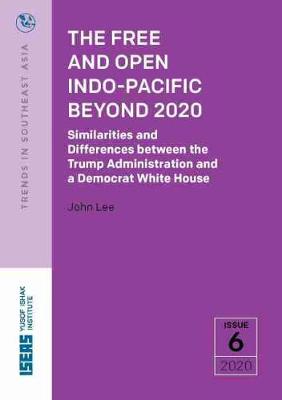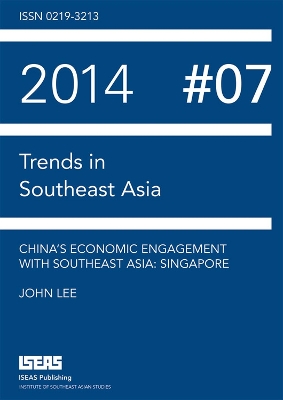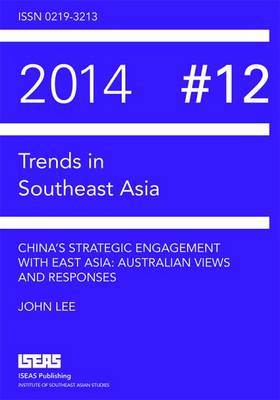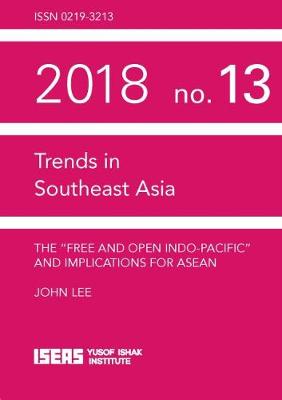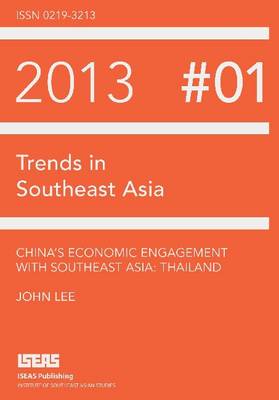Trends in Southeast Asia
7 total works
American Indo-Pacific policy will be driven by its China policy, regardless of whether there is a second-term Donald Trump administration or a first-term Joe Biden administration.
The Republicans will continue to frame the major challenge as "balancing" against Chinese power and "countering" the worst aspects of Beijing's policies. Establishment or moderate Democrats under Biden will choose the softer language of seeking a favourable "competitive coexistence" in the military, economic, political and global governance realms, and the reassertion of American leadership and moral standing.
In advancing the FOIP, the current administration argues that disruptiveness and unpredictability are necessary to reverse what they see as the "normalization" of Chinese assertiveness, coercion and revisionism. They also point to the closeness of US cooperation with Japan, Australia and India and bourgeoning strategic relationships with Vietnam. A second-term Trump administration will continue to seek out "fit-for-purpose" existing institutions and relationships, or prioritize new ones.
Establishment Democrats believe that the "America First" unilateralist approach is unsettling for allies and partners. In advancing a favourable "competitive coexistence" with China, Democrats will seek to expand the tools of statecraft and achieve a better balance between military/economic/political/governance approaches.
Prima facie, a Biden administration might position America as a more consultative guarantor of a preferred order. However, there will be greater pressure on Southeast Asians to accept more collective responsibility to advance common objectives. This means hedging in a manner more suitable to American rather than Chinese preferences. Failing that, more emphasis might be placed on greater institutionalization of the Quad and ad hoc groupings.
A Bernie Sanders administration, now an unlikely prospect, would be a disaster for US standing and power in the region, and therefore for Southeast Asia.
The Republicans will continue to frame the major challenge as "balancing" against Chinese power and "countering" the worst aspects of Beijing's policies. Establishment or moderate Democrats under Biden will choose the softer language of seeking a favourable "competitive coexistence" in the military, economic, political and global governance realms, and the reassertion of American leadership and moral standing.
In advancing the FOIP, the current administration argues that disruptiveness and unpredictability are necessary to reverse what they see as the "normalization" of Chinese assertiveness, coercion and revisionism. They also point to the closeness of US cooperation with Japan, Australia and India and bourgeoning strategic relationships with Vietnam. A second-term Trump administration will continue to seek out "fit-for-purpose" existing institutions and relationships, or prioritize new ones.
Establishment Democrats believe that the "America First" unilateralist approach is unsettling for allies and partners. In advancing a favourable "competitive coexistence" with China, Democrats will seek to expand the tools of statecraft and achieve a better balance between military/economic/political/governance approaches.
Prima facie, a Biden administration might position America as a more consultative guarantor of a preferred order. However, there will be greater pressure on Southeast Asians to accept more collective responsibility to advance common objectives. This means hedging in a manner more suitable to American rather than Chinese preferences. Failing that, more emphasis might be placed on greater institutionalization of the Quad and ad hoc groupings.
A Bernie Sanders administration, now an unlikely prospect, would be a disaster for US standing and power in the region, and therefore for Southeast Asia.
China is a relatively minor source of FDI into Singapore and pales in comparison to FDI from advanced economies in North America and the EU. This will remain the case for the foreseebale future despite recent agreements facilitating Chinese firms and capital entering into Singapore, and which reduce the transaction costs of doing so. Firms from China are also a relatively small investor in the critical Singaporean Financial & Insurance Services sector. When it comes to the foreign portfolio investment (FPI) which helps provide liquidity and capital for Singaporean listed firms, china is a minscule player. Assets of chinese banks make up a very small percentage of the assets of the very open banking sector in Singapore. the bottom line is that Singapore's standing and status as one of the world's leading and most attractive financial centres prevents Signapore from being over-reliant on ay one financial partner, and Singapore is certainly not over-reliant on China.
Under the current Tony Abbott Government, Australia's views of china's strategic engagement and motivations in the region do not differ substantially from many of the predominant views held in Southeast Asian capitals. Similarly, Australia's strategic response to deepen its alliance with the U.S., forge new security partnerships with like-minded countries such as Japan, and strengthen the U.S.-led strategic order in a number of bilateral and multilateral approaches is reflective of regional trends, even though Canberra (as a formal U.S. ally) is more committed to balancing with the U.S. vis-a-vis China than many other countries at this stage. Australia's geo-strategic depth, lack of territorial and maritime disputes with other Asian countries, and alliance with the U.S. has offered the country's non-governmental strategies and influential thinkers a degree of "freedom" in speculating about the strategic policy for the future. This has allowed some unconventional ideas to emanate from respected Australian experts and commentators about strategic policy.
Defined by its geography, the troubled history between the two countries, and the huge asymmetry of power, Vietnam pursues a counter-dominance strategy towards China even as it adopts a softly-softly diplomatic approach with its northern neighbour.
Over-reliance on a far larger Chinese economy and the possibility of China economically punishing Vietnam for strategic policies is a genuine concern for Hanoi and questions the degree to which its counter-dominance strategy vis-a-vis China can be sustained.
While China has emerged as Vietnam's largest trading partner by volume and Vietnamese dependency on Chinese imports is growing, deeper analysis of the nature and structure of trade between the two countries suggests that China's capacity to use trade to enhance its strategic leverage over Vietnam is far more restricted than is often assumed. Any attempts by Beijing to use the trading relationship for strategic gain would impose considerable costs on China.
Over-reliance on a far larger Chinese economy and the possibility of China economically punishing Vietnam for strategic policies is a genuine concern for Hanoi and questions the degree to which its counter-dominance strategy vis-a-vis China can be sustained.
While China has emerged as Vietnam's largest trading partner by volume and Vietnamese dependency on Chinese imports is growing, deeper analysis of the nature and structure of trade between the two countries suggests that China's capacity to use trade to enhance its strategic leverage over Vietnam is far more restricted than is often assumed. Any attempts by Beijing to use the trading relationship for strategic gain would impose considerable costs on China.
In recent times, the United States, Japan and Australia have all promoted extremely similar visions of a Free and Open Indo-Pacific as the central organizing concept to guide their efforts in the region. The concept is essentially a reaffirmation of the security and economic rules-based order which was cobbled together after the Second World War - especially as it relates to freedom of the regional and global commons such as sea, air and cyberspace, and the way nations conduct economic relations.
Be that as it may, the Free and Open Indo-Pacific is an updated vision of collective action to defend, strengthen and advance that order. It signals a greater acceptance by the two regional allies of the U.S. of their security burden and takes into account the realities of China's rise and the relative decline in dominance of the U.S.
There are a number of noteworthy "updates" which include:
The three countries have also been strong supporters for the revival of the Quadrilateral grouping which also includes India. However, and notwithstanding some apprehension in Southeast Asia, about where the "Quad" is heading, the latter grouping is only still a fledgling one and its shape and development will depend on the extent to which the four countries become concerned about China's activities in both Oceans.
Finally, the Association of Southeast Asian Nations (ASEAN) and its member states continue to delay any definitive response to the Free and Open Indo-Pacific concept. Although its principles are attractive to many ASEAN member states, long-held conceptions of ASEAN centrality and its meaning gives the organization apparent reason for hesitation. The reasons include fears of diminished centrality and relevance, and reluctance to endorse a more confrontational mindset being adopted by the U.S. and its allies - including the revival of the Quadrilateral grouping with India - with respect to China.
The reality is that while ASEAN and major member states are focused primarily on the risks of action, there are considerable risks of inaction and hesitation. The current era will either enhance or lessen the relevance of ASEAN in the eyes of these three countries in the years ahead depending on how the organisation and its key member states respond.
Indeed, the paper argues that ASEAN is more likely to be left behind by strategic events and developments if it remains passive, and that the ball is in ASEAN's court in terms of the future of its regional "centrality".
Be that as it may, the Free and Open Indo-Pacific is an updated vision of collective action to defend, strengthen and advance that order. It signals a greater acceptance by the two regional allies of the U.S. of their security burden and takes into account the realities of China's rise and the relative decline in dominance of the U.S.
There are a number of noteworthy "updates" which include:
- A deliberate move from "Asia-Pacific" to "Indo-Pacific" as the primary geo-strategic and geo-economic area of interest and responsibility for the three countries;
- An increased emphasis on creating and sustaining a "balance of power" in favour of the rules-based order; and
- A greater emphasis on the liberal aspects of a preferred order including the importance of rule-of-law and limitations on how governments wield their power, and greater separation of political and strategic objectives on one hand with commercial activities on the other.
The three countries have also been strong supporters for the revival of the Quadrilateral grouping which also includes India. However, and notwithstanding some apprehension in Southeast Asia, about where the "Quad" is heading, the latter grouping is only still a fledgling one and its shape and development will depend on the extent to which the four countries become concerned about China's activities in both Oceans.
Finally, the Association of Southeast Asian Nations (ASEAN) and its member states continue to delay any definitive response to the Free and Open Indo-Pacific concept. Although its principles are attractive to many ASEAN member states, long-held conceptions of ASEAN centrality and its meaning gives the organization apparent reason for hesitation. The reasons include fears of diminished centrality and relevance, and reluctance to endorse a more confrontational mindset being adopted by the U.S. and its allies - including the revival of the Quadrilateral grouping with India - with respect to China.
The reality is that while ASEAN and major member states are focused primarily on the risks of action, there are considerable risks of inaction and hesitation. The current era will either enhance or lessen the relevance of ASEAN in the eyes of these three countries in the years ahead depending on how the organisation and its key member states respond.
Indeed, the paper argues that ASEAN is more likely to be left behind by strategic events and developments if it remains passive, and that the ball is in ASEAN's court in terms of the future of its regional "centrality".
Strategic Possibilities and Limitations for Abe's Japan in Southeast Asia
by John Lee
Published 2 June 2015
Prime Minister Shinzo Abe's desire for Japan to play a more proactive role in strategic affairs stems largely from not just his concern about the nature of China's rise but the challenge to the post-war liberal regional order that the latter's rise and behaviour presents. Any disruption to that order is perceived to be extremely detrimental to Japan's core national interest. The concern with reinforcing and strengthening the existing regional order is causing Japan to take far greater strategic interest in Southeast Asia and also reflects lessons learnt from Abe's first time in office (2006-07). The increased Japanese strategic interest in Southeast Asia is welcomed by all key states in Southeast Asia and the United States, meaning that the growing Japan-Southeast Asian strategic dynamic is mutually reinforcing. Japanese desire to play a more proactive strategic role in Southeast Asia needs to be understood alongside its post-war constitutional limitations.
There is strong potential and promising possibilities for Japan to play a more proactive multilateral role in Southeast Asia through its standing and participation in regional institutions (especially ASEAN-led or backed institutions) that will further Tokyo's objectives and advance the strategic and security goals of key Southeast Asian states. Japan's capacity to significantly enhance its strategic role in the region ultimately depends on the success of Abe's domestic reforms.
There is strong potential and promising possibilities for Japan to play a more proactive multilateral role in Southeast Asia through its standing and participation in regional institutions (especially ASEAN-led or backed institutions) that will further Tokyo's objectives and advance the strategic and security goals of key Southeast Asian states. Japan's capacity to significantly enhance its strategic role in the region ultimately depends on the success of Abe's domestic reforms.
This Trends in Southeast Asia series - now revamped and redesigned - acts as a platform for serious analyses written by selected authors who are experts in their fields. It is aimed at inspiring policymakers and encouraging scholars to contemplate the diversity and dynamism of this exciting region.
This issue is the first in a planned series on the theme of “China’s economic engagement with Southeast Asia”.
There is evidence that China engages in “economic statecraft” in using tools such as trade and investment to influence strategic and political decisions in so-called “swing states” in Southeast Asia. When it comes to Thailand, Beijing’s actual or material capacity to use these economic tools to significantly alter decision-making in Bangkok is limited and frequently overstated. Although the economic relationship with China will grow in importance, the relatively open and diverse nature of the Thai economy offers the country significant trade and investment alternatives that are denied to neighbours such as Cambodia.
This issue is the first in a planned series on the theme of “China’s economic engagement with Southeast Asia”.
There is evidence that China engages in “economic statecraft” in using tools such as trade and investment to influence strategic and political decisions in so-called “swing states” in Southeast Asia. When it comes to Thailand, Beijing’s actual or material capacity to use these economic tools to significantly alter decision-making in Bangkok is limited and frequently overstated. Although the economic relationship with China will grow in importance, the relatively open and diverse nature of the Thai economy offers the country significant trade and investment alternatives that are denied to neighbours such as Cambodia.
